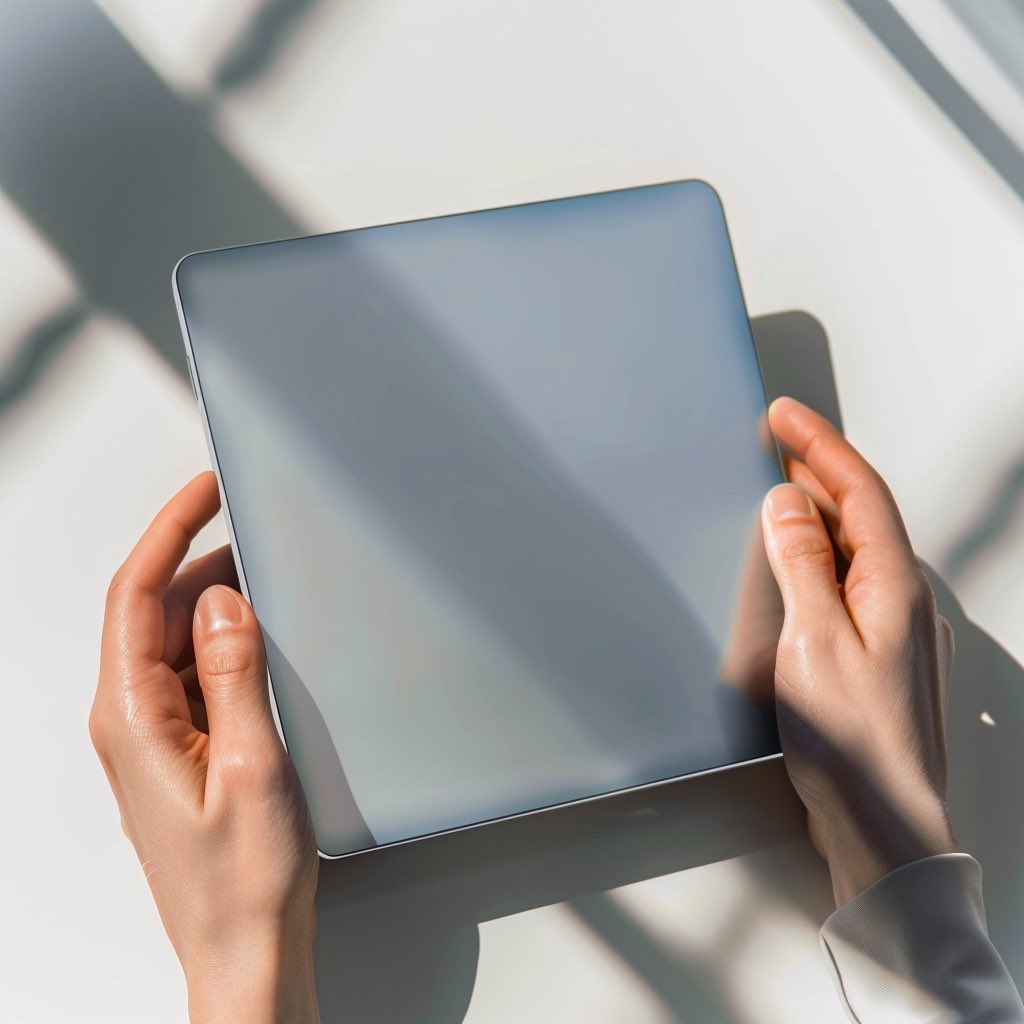
Screenless Canvas for Holographic Creation
The tablet, made of durable high-impact polycarbonate, serves as a tangible interface for interacting with virtual content displayed through AR glasses.
The tablet, made of durable high-impact polycarbonate, serves as a tangible interface for interacting with virtual content displayed through AR glasses. Despite having no screen of its own, the tablet's surface becomes a canvas for holographic projections allowing users to manipulate code and digital objects in three-dimensional space. The device features an advanced haptic feedback system, providing vibrations in response to touch and gestures. This tactile response enhances the user's sense of interaction with virtual elements making the experience more immersive and intuitive. The tablet’s rugged construction allows for casual handling while its ergonomic design ensures comfort during extended use. This hybrid approach to spatial computing bridges the gap between physical and virtual interactions offering a novel solution for tasks like coding, 3D modeling, and data visualization. By combining the tangible feel of a physical object with the flexibility of mixed reality, this concept aims to make spatial computing more accessible and natural for users across various fields.